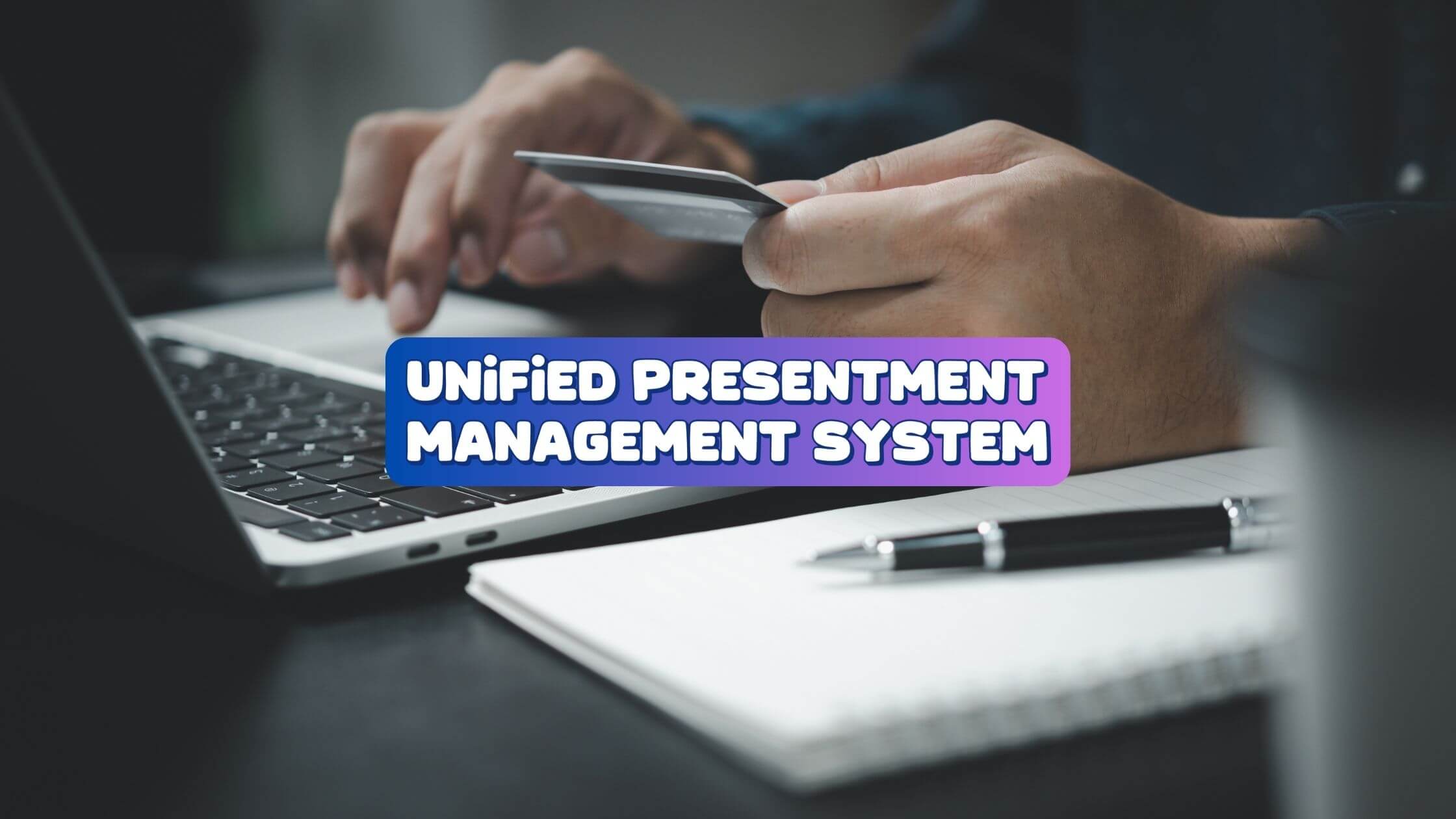Unified Presentment Management System (UPMS): A Game-Changer for Indian Businesses

Let’s be honest. Running a business in India often feels like fighting on multiple fronts—sales, operations, compliance, and most importantly, cash flow management. You can have the best product in the market, but if your payment cycles are irregular, your growth engine sputters.
That’s where the Unified Presentment Management System (UPMS) comes in. Launched by NPCI Bharat BillPay (NBBL) in January 2022, UPMS is not just another payment buzzword. It’s a framework designed to simplify recurring payments for businesses and customers alike.
In this guide, I’ll break down Unified Presentment Management System (UPMS) from a business-first perspective: how it works, what it means for Indian enterprises, and why forward-thinking companies should pay attention before the rest of the market catches up.
Table of Contents
Unified Presentment Management System (UPMS)
Before UPMS, India already had BBPS (Bharat Bill Payment System)—a unified platform that allowed customers to pay multiple types of bills from one place. But BBPS was largely a pull-based system—customers had to fetch bills and initiate payments.
UPMS flips that script. It’s a push-based recurring payment management system. Once a customer opts in, their bills are automatically fetched, presented, and can even be auto-paid based on their standing instructions.
Think of it as moving from “remind and chase” to “deliver and collect.”
This change matters because Indian businesses—from utilities to edtech startups—lose crores every year to late payments, defaults, and collection costs.
How UPMS Works (Step-by-Step)
Here’s a simplified flow of how UPMS functions in the real world:
- Customer Opt-In
A customer registers for UPMS through a BBPS-enabled channel (like their bank app, fintech wallet, or even your business’s payment page). - Mandate Setup
They set a standing instruction for either:- Auto-debit (money deducted automatically), or
- Present-and-Pay (bill presented, customer confirms payment).
- Auto-Bill Fetching
Every billing cycle, UPMS fetches the bill details automatically from the biller’s system. - Bill Presentation
The fetched bill gets delivered across channels—bank apps, wallets, fintech apps, or directly via your system if integrated. - Payment Execution
- If auto-debit, payment is seamless.
- If manual: the customer clicks “Pay Now” and completes payment.
- Settlement & Reconciliation
NPCI ensures settlement, while businesses get real-time reconciliation reports.
It’s streamlined, regulated, and reliable—something Indian businesses desperately need.
Why Indian Businesses Should Care
1. Predictable Cash Flow
For businesses like NBFCs, insurance providers, mutual funds, or SaaS startups, irregular payments are a headache. UPMS ensures bills are presented and collected on schedule, reducing defaults and stabilizing cash flow.
2. Lower Collection Costs
No more endless reminders through SMS, emails, or call centers. With UPMS, reminders and payments are automated. This translates to direct savings in operational expenses.
3. Customer Retention Through Convenience
Recurring payments = customer stickiness. Once someone opts in for UPMS, the chances of churn drop significantly because they’re tied into a frictionless billing cycle.
4. Compliance Built In
Since UPMS runs on NPCI’s regulated rails, businesses automatically inherit compliance and standardization. That’s a huge relief in India’s strict payment ecosystem.
5. Equal Opportunity for SMEs
Earlier, only large corporations could build expensive recurring billing systems. With UPMS, even a coaching center in Lucknow or a gym in Pune can offer the same seamless experience as an MNC.
Who Benefits the Most?
Let’s break this down sector by sector:
- Utilities (Electricity, Gas, Water, Telecom):
Higher payment discipline, reduced manual follow-ups. - BFSI (Banks, NBFCs, Insurance, Mutual Funds):
- Mutual funds: SIPs become frictionless.
- Insurance: fewer lapses in policy premiums.
- NBFCs: EMI defaults cut down.
- EdTech & Education Institutions:
- Schools, colleges, and coaching institutes—fees can be auto-fetched and collected.
- Less admin work, better student experience.
- Subscription Businesses:
- OTT, SaaS platforms, newspapers.
- UPMS levels the playing field by offering a low-cost, scalable recurring billing model.
- Fintech Apps:
- Wallets and super apps can integrate UPMS and become the go-to place for recurring payments, boosting retention and engagement.
Technical and Business Integration
For businesses looking to integrate, here’s the blueprint:
- API Integration: Businesses can connect to UPMS via NBBL’s APIs.
- Webhook Notifications: Bill presentment updates get delivered in real time.
- Sandbox Environment: Businesses can test in a safe zone before rolling out.
- Payment Modes: Works with UPI AutoPay, NACH, debit/credit cards, wallets, and net banking.
This setup is especially attractive for startups and SMEs—minimal tech investment for enterprise-grade billing infrastructure.
The Challenges You Shouldn’t Ignore
Of course, nothing is flawless. Businesses should be aware of these roadblocks:
- Customer Awareness Is Low
Unlike UPI, UPMS isn’t yet a household name. You’ll need to educate customers. - Dependency on NPCI Rails
Any downtime affects everyone. Unlike private infra, you can’t control it. - Branding Limitations
Since UPMS flows are standardized, you get less room to create custom branded experiences. - Onboarding Friction
Customers still need to opt in manually. Convincing them is step one.
Why UPMS Could Reshape Business in India
- Recurring Revenue Becomes Mainstream
More Indian companies will shift from one-time sales to subscription models. - UPI AutoPay + UPMS Combo
Together, they’ll create a powerful recurring micro-payment ecosystem. - Data as an Asset
Businesses will gain insights into customer payment behaviors—helpful for forecasting and retention strategies. - SME Revolution
Gyms, coaching centers, small SaaS companies—everyone gets enterprise-like billing power. - Regulatory Push
RBI and NPCI are nudging digital payment adoption, and UPMS is set to follow the UPI success story.
How an Indian EdTech Could Use UPMS
Let’s take an example. Suppose a coaching institute in Delhi charges ₹5,000 monthly fees.
Without UPMS:
- Students/parents get reminders via WhatsApp or SMS.
- Payments are irregular and sometimes delayed.
- The admin spends hours reconciling accounts.
With UPMS:
- Parents opt in once.
- Bills auto-fetch every month.
- Payments are auto-debited or one-click approved.
- The institute enjoys a predictable cash flow and reduced admin costs.
Now imagine this applied across thousands of institutions nationwide. That’s scale.
Bottom Line
UPMS is not just a nice-to-have; it’s a strategic infrastructure shift. For Indian businesses, it offers:
- Stable cash flows through recurring payments.
- Reduced costs by automating collections.
- Customer loyalty via convenience.
- Scalability for startups and SMEs.
Yes, awareness is still low. And yes, you’ll need to hand-hold customers in the beginning. But make no mistake—businesses that embrace UPMS early will enjoy an unfair advantage in retention and revenue predictability.
FAQs
What is the Unified Presentment Management System (UPMS)?
UPMS is a system launched by NPCI Bharat BillPay to simplify recurring bill payments. It automatically fetches and presents bills for utilities, insurance, loans, education fees, and subscriptions, reducing defaults and delays.
How does UPMS work for customers?
Customers register once through a BBPS-enabled channel, set standing instructions, and then receive bills automatically. Payments can be made via auto-debit or manual approval.
Which businesses in India benefit most from UPMS?
Utilities, NBFCs, insurers, mutual funds, education institutes, gyms, SaaS providers, and OTT platforms benefit most as they rely heavily on recurring collections.
What payment methods are supported under UPMS?
UPMS works with UPI AutoPay, debit cards, credit cards, net banking, NACH, and other BBPS-supported payment rails.
How does UPMS help businesses improve cash flow?
By automating bill presentment and enabling timely payments, UPMS reduces late payments and ensures more predictable and stable cash flows.
Is UPMS only for large corporates?
No. SMEs, startups, and local businesses such as schools, coaching centers, gyms, and housing societies can also integrate UPMS to manage recurring payments easily.
What are the main advantages of UPMS for customers?
Customers enjoy convenience, timely reminders, fewer missed payments, and secure transactions through regulated NPCI infrastructure.
How can a business integrate UPMS?
Businesses can integrate via NPCI-approved BBPOUs or through aggregators and fintech partners, using APIs, webhooks, and sandbox testing before rollout.
What challenges should businesses expect with UPMS adoption?
Low awareness among customers, dependency on NPCI rails, limited customization in flows, and the need to proactively onboard users are key challenges.
What is the future outlook of UPMS in India?
UPMS is expected to transform recurring payments like UPI transformed P2P transfers. It will drive subscription models, reduce defaults, and empower SMEs with enterprise-grade billing systems.
Final Thoughts
India has already seen what UPI did for peer-to-peer payments. UPMS is poised to do the same for recurring payments.
The winners will be businesses that don’t just wait for customers to discover UPMS but actively build it into their customer experience. Whether you’re an insurer, an edtech startup, or a SaaS company, now is the time to experiment, integrate, and educate.
If recurring payments are central to your business model—and they probably are—UPMS is the silent growth lever you can’t afford to ignore.
